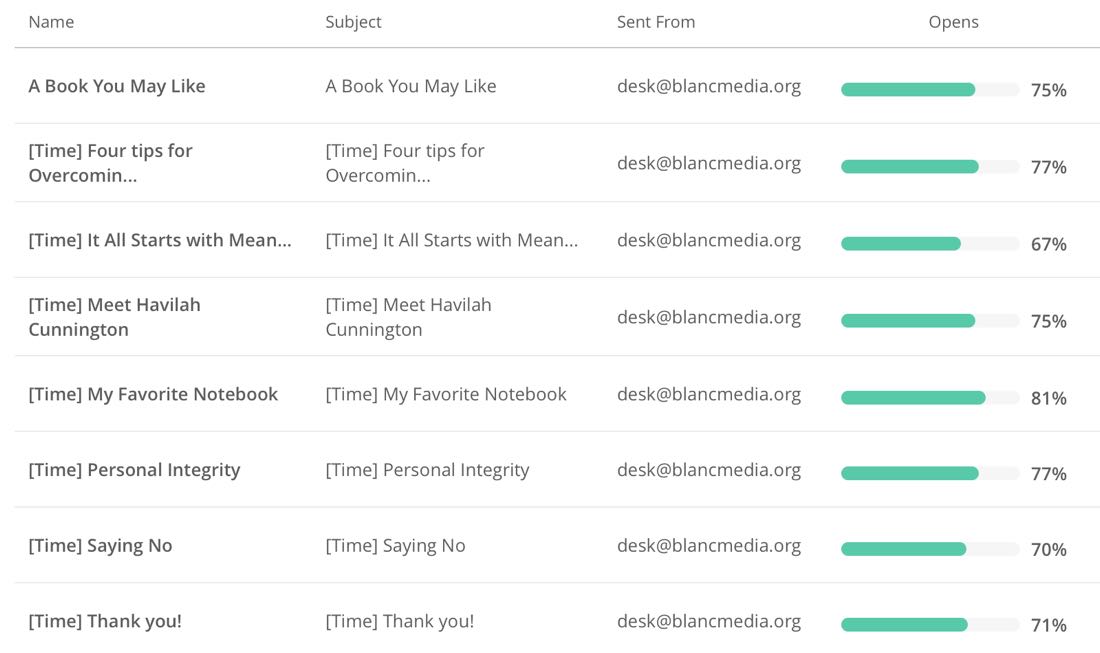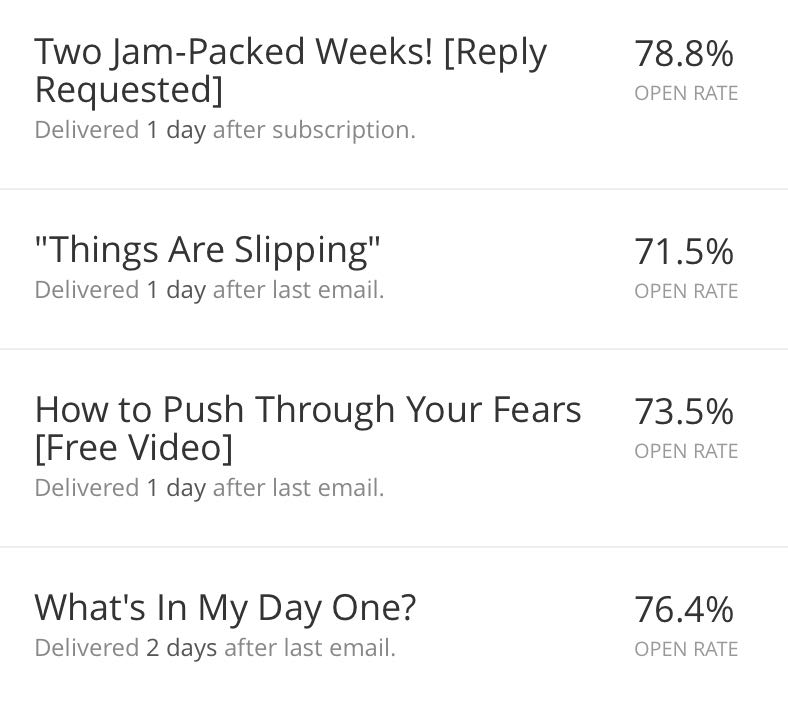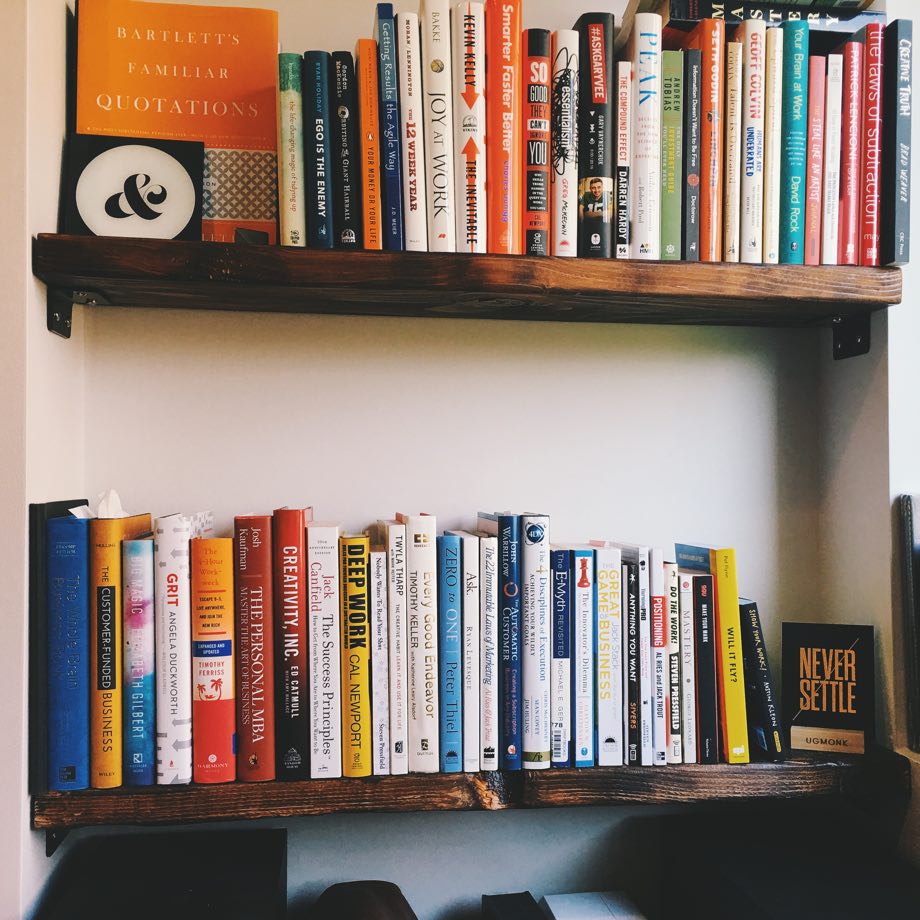Between ideas, time, and focus, which do you have the most of?
Ideas, right?
We all have more ideas than time. Myself included.
A few years ago I wrote about how I would often find myself wrestling with the tension of having more ideas than time: “There are many great things I want to do and build and ship and start, but I just don’t have the time to do them.”
And I still feel that tension. In fact, hopefully I will always feel the tension of having more ideas than time because ideas are, and should be, a commodity.
Here’s the thing: it’s not about the balance between time and ideas.
The trouble comes when we have a lack of focus. When we have more time than focus.
Or, put another way, if we have more time than focus it means there is time that we are wasting.
Does this mean you should spend all of your time being “focused” on work? Not at all. I don’t have the energy for that. And neither do you. Besides, there is so much more to living a focused life than just being productive in the office.
Having more focus than time means you’re proactive and intentional about how you spend your minutes. It means thinking ahead and establishing some awesome default behaviors to fall back on when your focus and energy run out during the day.
* * *
This week, as we continue discussing The Creative Life, I’m going to answer some questions I’ve received regarding how to make time for your creative project.
Florian H. says:
My biggest challenge is to be consistent in working on the different projects I’m currently involved in and want to drive forward. I have two professions, a side project, and lots of ideas. I’m also a father of two daughters. :)
Julian S.:
My biggest struggle to move forward is to actually block the time necessary to invest into my creative endeavors. Because there’s always a ton of stuff to do relating to the business that pays my bills. Every day that I don’t reserve some time on my calendar to do it (and honor this appointment with myself!) it’ll be another day I didn’t move forward.
Marianne C.:
By far my biggest challenge is saying no to the other things that take all my time or at least figuring out ways to schedule high quality work time while still dealing with the endless minutiae of life and business.
To sum these questions up:
How can you make time (and follow through) in order to work on important projects and areas of responsibility when life is already so full?
This is a “category” of question that I get frequently. So much so, in fact, that I created an entire class that dives deep on time management.
As Benjamin Franklin said, “Do not squander time, for that’s the stuff life’s made of.”
Ultimately, managing your time is unto something. And that “something” is the living of life. How we spend our time is, quite literally, how we are living our life.
The good news is that diligence and focus are not personality types; they are skills you can learn.
In just a moment I’m going to share some ideas, perspectives, and practical suggestions that can help. But if there is one thing to take away, it’s this:
You have more control over your time than you think.
If you’re not happy with where things are at right now regarding your time and attention, then make a change.
There are some mindset changes you need (which I’ll get to in just a minute).
And there are some practical things you can do in order to improve your likelihood of success. And whereby “success” I mean “spending your time and energy the way you want to”.
Let’s dive in…
Start With Your Personal Integrity
Personal Integrity is defined as doing what you’ve said to yourself that you will do.
So many of us are good at following through with the commitments we make to others. But we are not so good at following through with the commitments we make to ourselves.
Without a deep amount of personal integrity, it will always be difficult for you to make changes in your life. Not that change is ever easy, but it is especially challenging when you have a history of not following through on your own commitments.
The best thing to do here is start small with something simple…
Such as putting your shoes away in the same spot every day when you come home. Make that the first thing you do when you arrive home, no matter what shoes you are wearing or what the weather was like outside, etc.
Do that every single day for a month, and you will begin building your personal integrity. You’ll be following through with a commitment and proving to yourself that you can see a task through to the end.
You Have to Make Time
You don’t find time. You make it.
I know it’s semantics. But it’s also a huge mindset change and it’s one worth musing on for a moment.
Sure, if we were being philosophical and direct about it we would all agree that, yes, of course, you don’t find time the way you might find a dollar bill on the sidewalk.
But how often do we truly act that way in our lives?
Many of us act as if we are trying to find the time. We are looking around, hoping there may be an hour or two just lying there not being spent.
Say No
You make time by saying no to a lot of things — other interests, hobbies, time-sucks, etc.
You also need boundaries for yourself so that you know when to say no to other people and opportunities. Your creative ideas and the side projects you’re working on are valuable.
Find Your Pockets
Something we do in The Focus Course, is take a week and track all the time we are spending. Literally we try to map out every minute of the day for a whole week and then see what our schedule actually looks like. It brings clarity about how we are truly spending our time.
And most folks (myself included) always discover there are pockets of time here and there that we didn’t realize where there.
I know it doesn’t feel as if there is any time in the day. Every minute of your day is spent on something — you’ve got something that you’re doing.
But we all do.
Every single one of us is spending every minute of our day. Right now, for example, you’re spending your time reading this article. (Thank you!)
What happens when you take a week to track your movements, you discover those pockets. And the pockets aren’t spots where you’re doing nothing at all. They’re spots where you realize you could spend less no time on a particular task.
Reduce your activation energy
Oftentimes, the real challenge is not in the making of time…
It’s getting started in the moment.
I have had so many conversations with folks who tell me how they don’t have time in their day. But when they come home from work, they watch TV for a few hours before going to bed.
If you were to take a whole week and track how you spend every minute, you would discover that you have pockets in your day that you could adjust to make time for other things. The trouble is that it’s not always easy to turn those pockets of time into creatively productive time.
Thus, the more you can do to reduce your activation energy, the better.
It’s the idea of helping your future self. And it was a revelation to me a few years ago.
Yes, you can change your schedule around. Yes, you can make some time. You can wake up earlier. You can skip your lunch break. You can dictate into a microphone while driving to work or write while on the bus. Etc…
But when you finally those precious minutes to do your creative work, the truth is you just don’t want to. You’re tired, your distracted, you’re not sure where to start.
Getting started is the hardest part.
Take heart: It’s that way for everyone. You’re not the only one.
There are some articles I’ve already written about this, that can help you, and I’ll list them out in a second.
But first, it boils down to this:
What is something you can do today that will help you make things easier to get started on your creative work tomorrow?
For further reading on reducing your activation energy, check out these additional articles:
Change your schedule for just a short season
My friend, Sean McCabe, took the month of July to write a book. It was a sprint, and then he returned to his regular schedule.
About a month ago, I took one week and spent it getting up an hour earlier in order to write first thing in the morning. I enjoyed it so much I gave it a shot for another week. And then another. And another. And now I’ve been doing it for 4 straight weeks. But it started as a 5-day experiment.
Buy back your time
Are there things you can delegate or automate? Such as mowing the lawn or cleaning the bathrooms?
They say time is money, but time is worth infinitely more than money. You can always earn another dollar, but you never get back another minute.
If you can spend a few dollars to give yourself a few hours, and then use that time doing something you love, that’s a bargain!
If the idea seem preposterous to you, try saving up to pay for a service for just one month. And then commit to yourself that by the end of the month you will have created something you can sell.
Think Outside the Box
What about your commute? Could you negotiate with your boss to work from home one day a week, and then use the time you save on your commute to work on your side project?
Accountability & Social Support
By far and away, one of the best ways to help yourself show up every day is to be accountable to that task.
If you have a small measure of accountability in place, where you’ve got to report back to someone about your progress, you are far more likely to complete it.
As part of the Focus Club, we’ve been doing daily stand-ups in our members-only chat. Every morning at 10am people can check in with what they’re working on.
As I’ve written about before, social support is your single greatest asset when it comes to success in nearly every single area of your life.
Start with 20 minutes.
If you know how you want to spend your time, but the struggle is to make the time, start with 20 minutes. For sure you have 20 minutes somewhere in your day.
Break it down like this:
- Set a timer for 15 minutes (yes, 15). Spend those first 15 minutes working on your project.
- Then, spend the remaining 5 minutes leaving a breadcrumb trail for yourself so that tomorrow you know exactly where to pick up where you left off.
Find Your Creative Focus
If you don’t yet know how to spend your time, or what to focus your creative energy on, this workbook can guide you through that.
My Own Story
I’ve been writing and publishing regularly for over a decade. A few of the milestones along that journey include:
- Jan 2006: Started my first blog on Blogger
- Jul 2006: Bought my own domain and started publishing more regularly
- Jul 2007: Started shawnblanc.net
- Oct 2010: Started selling sponsorships
- Feb 2011: Announced the Shawn Today membership
- Apr 2011: Quit my job and to write full time
- Aug 2011: Built and launched Tools & Toys
- Feb 2012: My first son, Noah, was born
- Jul 2012: Wrote my first book, Delight is in the Details
- Sep 2013: My second son, Giovanni, was born
- Nov 2013: Launched The Sweet Setup
- Jul 2014: Updated my book with new chapters and interviews
- Feb 2015: Started my email newsletter
- Jun 2015: Launched The Focus Course
- Dec 2015: Created The Elements of Focus
- Jan 2016: Updated The Focus Course
- Jan 2016: Hired a full-time employee
- Mar 2016: Launched a Time Management class
- Jun 2016: Hosted Focus Camp
- Aug 2016: Started The Focus Club
Now, let me share a bit of behind-the-scenes backstory to those milestones…
For those first few years of writing in 2006 and 2007, I was a young married dude and was traveling. I had plenty of free time and writing for my website was perhaps my singular biggest focus. I loved it.
In early 2008 I took a new job that required roughly 70-80 hours a week. I did that job for 3 years: from 2008 – 2011. But I continued to write on the side and build an audience.
In fact, during those three years of writing on the side, I was able to build enough relational equity with my readership that I was able to quit my job and go full-time writing my website thanks primarily to the generous monthly support of readers like you.
Then, just one year after going full-time with my website, my wife and I had our first son.
After her maternity leave, she returned to do part-time work with our church. For about a year my wife’s schedule was extremely varied. Some days she would be gone in the morning, and some days in the afternoons. I was a part-time writer and a part-time stay at home dad who didn’t have any regularity to my day-to-day routine.
After our second son was born 3 years ago, my wife changed her schedule to something more regular. I now have my whole day every day to focus on the work.
And yet, even now, I write for a living, and yet I’m waking up at 6am — before the kids, before the neighbors, before I want to — so I can get a solid hour of writing in as the very first thing to I do in my day.
Sure, I will do more writing during the day, but not like I do first thing in the morning. This early morning session is for me to write what matters. This is the time I write new articles and do the work of fleshing out ideas and topics.
In all of the aforementioned seasons it was a challenge to make the time to write. It has always been a challenge to show up and do the work, and I know that it will continue to be so.
Here is More Stuff on Time Management
I’ve been writing about creative focus and time management for years. It’s one of my favorite subjects.
Here are a few of my best resources on the subject. Some are completely free and some you can buy.
Accountability, Coaching, and All-Access Training for faster results
Also, check out our membership community, Focus Accelerator. It’s awesome. You can connect with like-minded folks every day, keep accountable to your most important work, join in on our live coaching calls (hosted by myself and the Focus Team), get all-access to our entire course library, and more.



